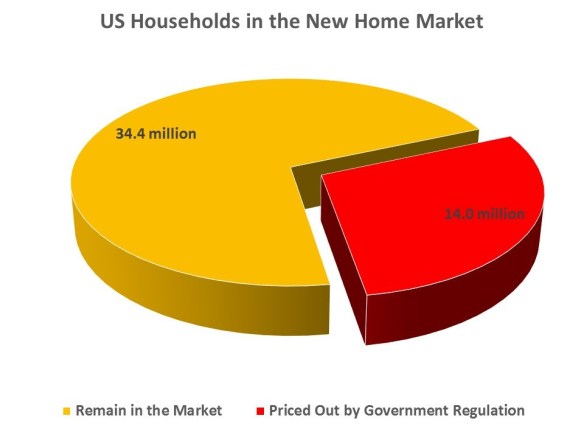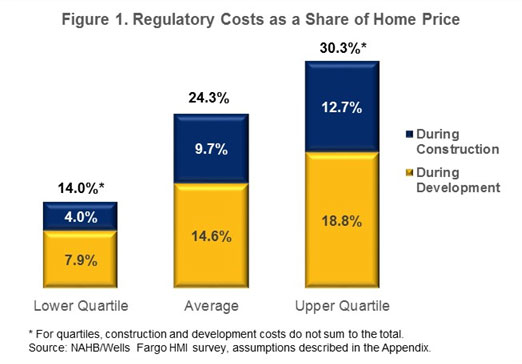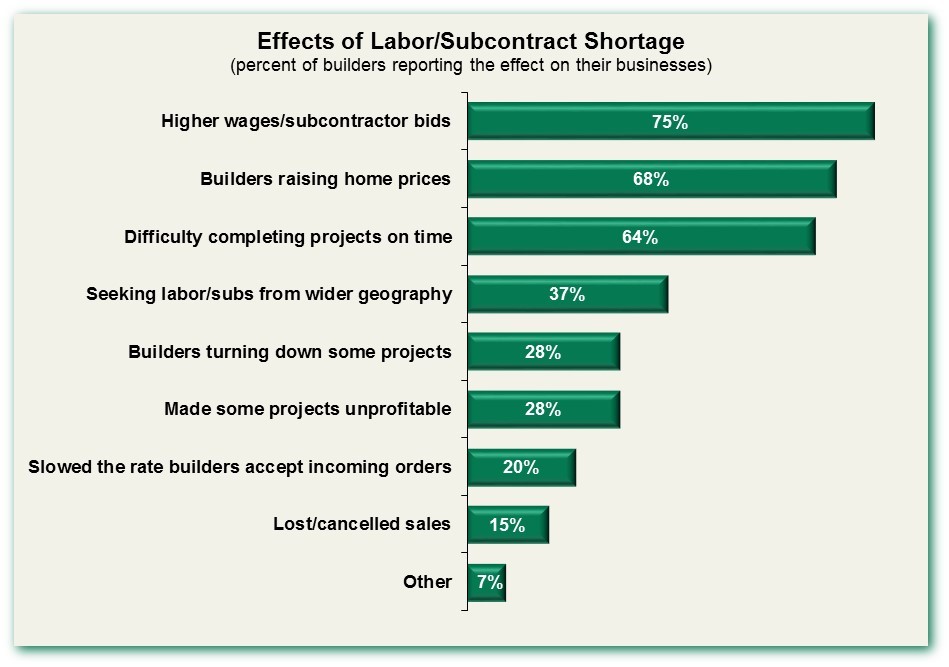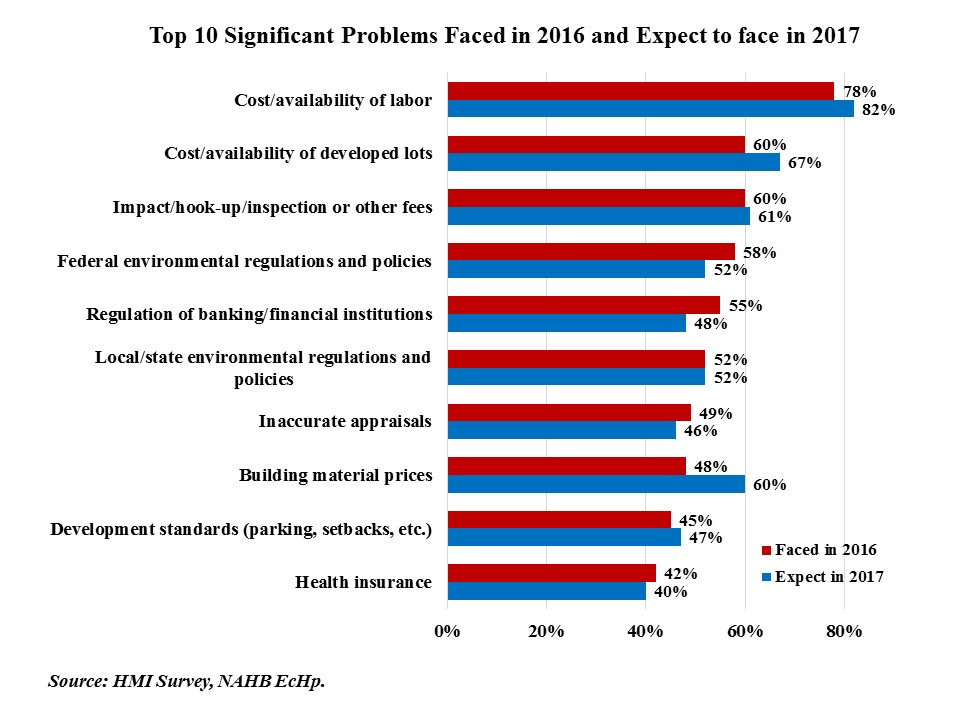The residential construction industry is facing several challenges that impact the pricing of new homes. We’d like to focus on two of these challenges: cost of regulation and labor shortage.
Cost of Regulation
The average cost for new construction homes (including single family and multi-family) is $380,327 [1]. This breaks down to $287,908 in construction costs and a staggering $85,200 in regulatory costs…that means over 24% of new construction in spent in regulatory fees [2].

Regulations, while typically well intentioned, can quickly price people out of purchasing a new home. Economists at the NAHB (National Association of Home Builders) recently determined that for every $1,000 increase in the cost of today’s median-priced home, nearly 153,000 American households are priced out and would no longer be able to afford it. [3]

The effects are more significant in areas where new homes are more affordable. Utah has historically been considered a more affordable market. According to Eric Allen at Utah-based Metrostudy, “With only 23 percent of all new homes built in the last year priced under $300,000, afforability is an area for concern as buyers continue to get pushed out of the market.” [4] Regulatory expenses contribute a large percentage of the overall price.
Regulation fees in new home construction have increased roughly $20,000 on a median-priced home since 2011 [5]. There are two main stages at which regulatory costs are levied: 1 during development, 2 during construction. The[AH1] impact of costs imposed during construction have increased the fastest, rising by almost 50%, from $22,535 to $33,784.
Labor Shortage

Several different factors have contributed to the severe skilled labor shortage the residential construction industry is currently experiencing in Utah and throughout the United States. The residential construction industry has been slow to recover from the recession in 2008. In Utah 51,000 jobs in the construction industry were lost between 2007 and 2011 [6]. During the recession a lot of people left the construction business altogether and many have not returned. In addition, according to Eric Allen at Metrostudy, “the millennial generation that’s starting to come up (has) a much more high-tech mentality, so they don’t want to do labor. They want to be on a computer in more of a high-tech industry. [4]” In a recent survey, more than 8 out of 10 single family home builders identified the cost/availability of labor as the most significant issue they will face in 2017 [7]. The large increase in costs for labor will add to the overall cost/price of new homes.
Conclusion
Costs of regulation and labor shortages have been and will continue to significantly drive up the cost of new construction and will negatively affect housing affordability

Works Cited
| [1] | E. Allen, “New, Resale, and Foreclosures By Housing Type Utah,” Metrostudy, West Jordan, UT, 2017. |
| [2] | P. Paul Emrath, “GOVERNMENT REGULATION IN THE PRICE OF A NEW HOME,” National Association of Home Builders, May 2016. [Online]. Available: http://www.nahbclassic.org/generic.aspx?genericContentID=250611&channelID=311. |
| [3] | “Rising Interest Rates, House Prices Push Thousands Out of the Market,” 13 December 2016. [Online]. Available: http://nahbnow.com/2016/12/rising-interest-rates-house-prices-push-thousands-out-of-the-market/ . |
| [4] | J. Lee, “Housing affordability an issue in new construction,” Deseret News, 27 February 2017. |
| [5] | P. Emrath, “Regulations at a whopping $84,671 to new home prices,” NAHB, 2016. |
| [6] | L. P. Langston, “The Fall and Rise of Utah’s Construction Industry: What happened to contstruction workers?,” February 2017. [Online]. Available: https://jobs.utah.gov/wi/pubs/specialreports/constructionreport.html. |
| [7] | R. Quint, “Housing Economics,” 1 March 2017. [Online]. Available: https://www.nahbclassic.org/generic.aspx?sectionID=734&genericContentID=255983&channelID=311. |
